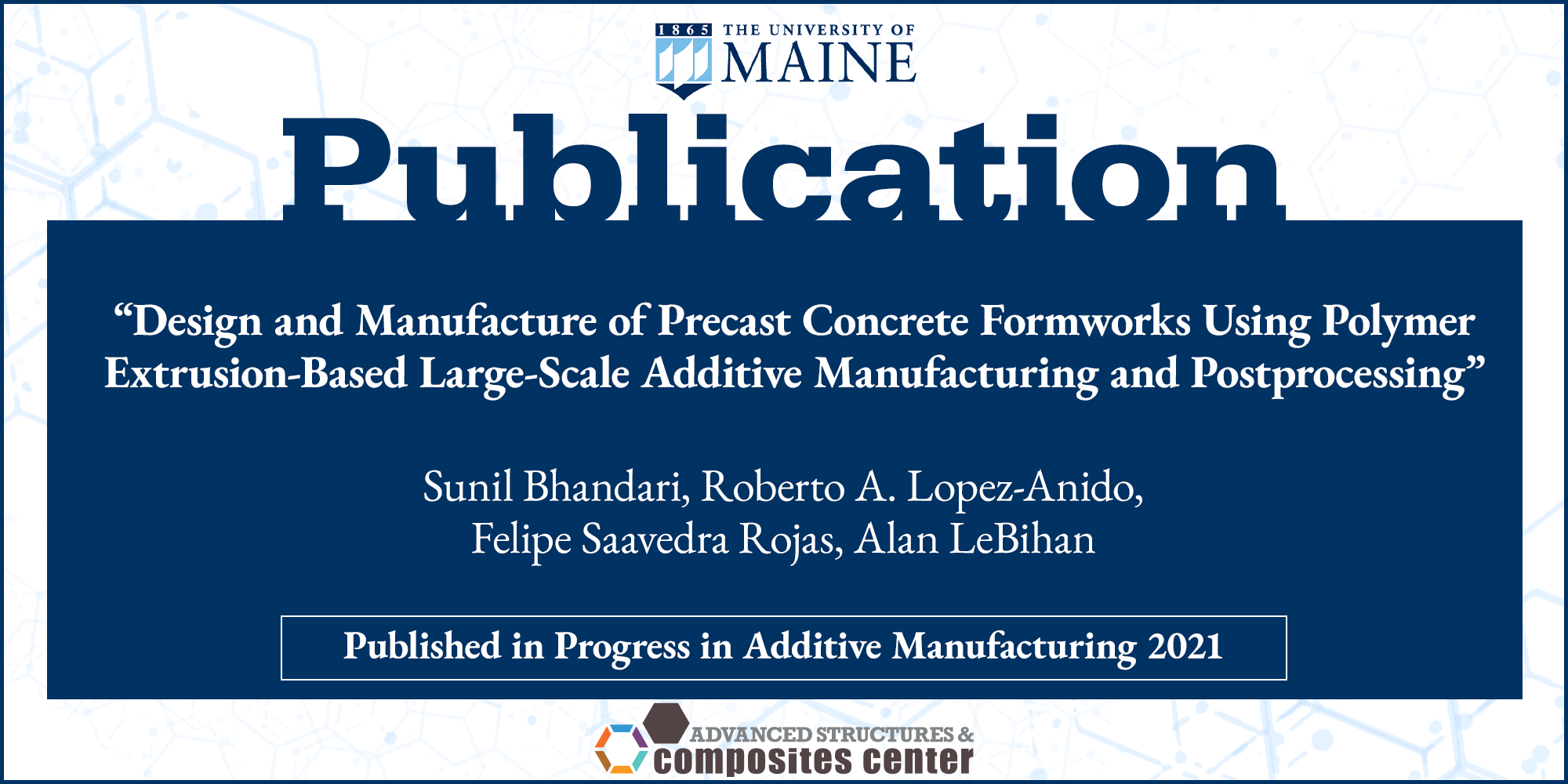
Chapter by Bhandari, Lopez-Anido, and Rojas published in Progress in Additive Manufacturing
Orono, Maine — A book chapter co-authored by postdoctoral research associate Dr. Sunil Bhandari, civil engineering professor Dr. Roberto Lopez-Anido, and graduate student Felipe Saavedra Rojas was recently published by ASTM in the book “Progress in Additive Manufacturing 2021”.
The chapter details a study investigating the manufacturing and postprocessing of large-scale 3D-printed formworks with bio-based polymer composite materials, and compares them with a conventional carbon-fiber polymer composite material. The study was carried out as part of an industrial collaboration with the Precast/Prestressed Concrete Institute (PCI), Northeast, and Unistress Corporation from Pittsfield, MA. The authors concluded that large-scale 3D printing in combination with CNC machining can effectively manufacture complex formworks for concrete casting using bio-based polymer composite materials, with comparable performance to conventional composite materials.
Design and Manufacture of Precast Concrete Formworks Using Polymer Extrusion-Based Large-Scale Additive Manufacturing and Postprocessing
Authors: Sunil Bhandari, Roberto A. Lopez-Anido, Felipe Saavedra Rojas, Alan LeBihan
Progress in Additive Manufacturing (2021)
Full Article
Published: 01 December 2022
Abstract
Large-scale thermoplastic polymer extrusion-based additive manufacturing (AM) has been used to fabricate precast concrete formworks. There are some limitations inherent to the large-scale AM process that need to be overcome to design complex, multipart additively manufactured formworks to be used for precast concrete. This research work uses a large-scale polymer composite AM process to manufacture two-part formworks. Postprocessing was used to repair imperfections, create smooth casting surfaces, achieve precise dimensional tolerance, and incorporate assembly mechanisms for multipart formwork. Two biodegradable polymer composites (wood-fiber polylactic acid and wood-fiber amorphous polylactic acid) and a conventional polymer composite (carbon fiber acrylonitrile butadiene styrene) were selected to manufacture four sets of two-part formwork. Design details, including the cellular infill pattern, continuous toolpath, and layer time selection, are presented. Postprocessing and repairs performed on the manufactured formworks to get the required dimensional tolerance and surface smoothness are discussed.
Keywords: large-scale additive manufacturing; formworks; precast concrete; PLA; ABS; postprocessing
Design and Manufacture of Precast Concrete Formworks Using Polymer Extrusion-Based Large-Scale Additive Manufacturing and Postprocessing
Contact: Katelin Moody, katelin.moody@maine.edu
